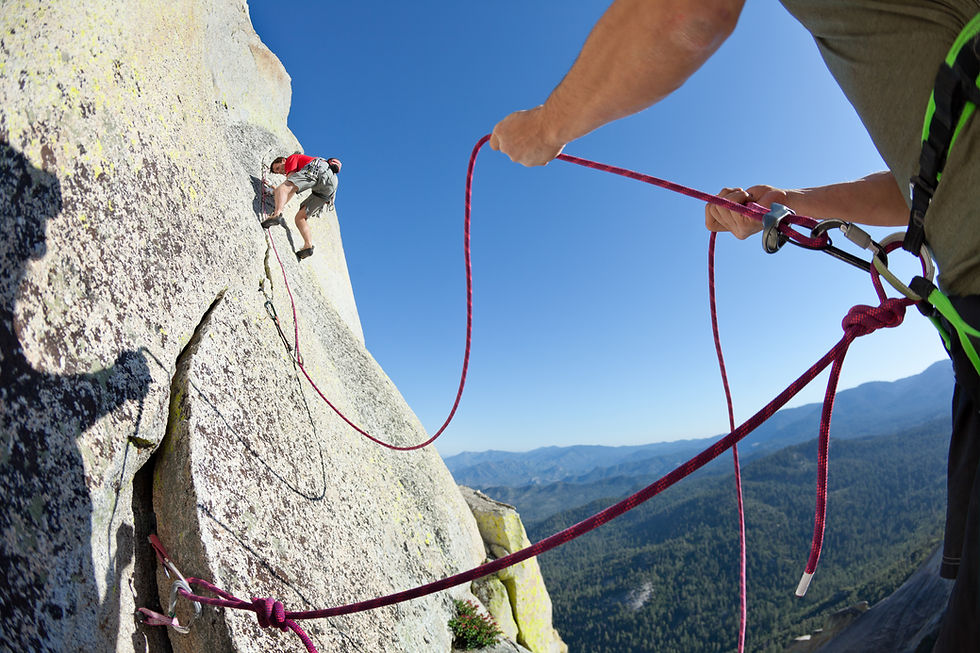Making Sense of Ski Ropes: Materials, Styles, and Their Advantages
- Katie Moroney
- May 8, 2024
- 3 min read
Ever found yourself standing on a ski dock, staring at a myriad of ropes with no idea which one to select? Ski ropes, might appear as just another piece of equipment, but they define the entire skiing experience. So, how do you solve this puzzle? What are the considerations that go into choosing the perfect ski rope? The answer is an exciting journey through materials, styles, and advantages. Let's embark on a voyage into the world of ski ropes to finally make sense of them all.
Ski ropes are much more than just lines to connect you with the boat. They send signals, provide balance, and play a vital role in ensuring your safety. Understanding the elements of a ski rope can make a world of difference in your skiing performance. Today we are unravelling the curtain that often shrouds ski ropes in mystery.
The journey takes us from materials and styles to their advantages, leaving you with easily digestible ‘nuggets’ of expert wisdom that will help you stand confidently before the rope section in the ski shop. Ready? Here we go!

The Basics: What are Ski Ropes?
Ski ropes are the lifelines of water skiing. They connect the skier to the boat, enabling smooth navigation and control. It is vital to choose one that perfectly suits your skill level, the water condition, and the type of skiing activity you're planning to engage in.
Ski ropes are not your average nylon or polypropylene ropes. They are the product of advanced technology and meticulous design that create a high-strength, low-stretch, resilient product for a safe and joyful skiing experience.
They come in myriad styles, each designed to perform specific tasks, and made out of diverse materials, each one offering unique advantages. Collectively, they form the undervalued yet critical component of your skiing gear.
Why Materials Matter: Understanding the Composition of Ski Ropes
Ski ropes can be composed of a variety of materials, but the most common are Poly E, Spectra, and Dyneema. Each of these materials offers different levels of stretch, strength, and durability.
Poly E ropes are highly stretchable, which makes them great for beginners who need some "spring" but don't require a strong pull from the boat. Conversely, Spectra and Dyneema ropes are built for the pros, offering superior strength, and almost zero stretch.
Understanding the material composition of your ski rope is critical in tailoring your skiing experience and ensuring optimal performance on water.
Decoding Styles: Making Sense of Ski Rope Varieties
Dive into the sea of ski ropes, and you'd find an assortment. From single handle to multi handle, from no stretch to low stretch ropes, the options are many.
Single-handle ropes bring simplicity and control to the game, perfect for beginners. On the flip side, multi-handle ropes cater to the skilled professional who crave challenges and want to push their skiing limits.
Paying heed to the style of ski ropes is as crucial as understanding the material they are made from. The style can dramatically affect how you maneuver through the waves.

Advantages Galore: The Importance and Benefits of Ski Ropes
Choosing the right ski rope is an investment in your safety, in enhancing your performance, and boosting your skiing experience.
A well-chosen ski rope ensures a smooth and responsive connection between the boat and the skier. It helps in better signaling, and effective balance, and impacts the control the skier exerts over their ride.
A ski rope's advantages go beyond just performance. The right rope can vastly improve your safety, giving you the confidence to push for that extra mile on the water.
Your Guide to Buying: Choosing the Right Ski Rope
When it comes to choosing a ski rope, factors like your skiing skill level, the type of skiing you plan on doing, your budget, and personal preferences come into play.
Finalize a ski rope that suits your style, is comfortable, and fits within your budget range. Always prioritize safety and go for a reliable, high-quality ski rope from a trusted brand.
Conclusion
Unraveling the world of ski ropes brings you one step closer to mastering the art of skiing. Equipped with insights into materials, styles, and their advantages, you are now prepared to make an informed and confident choice.




Comments